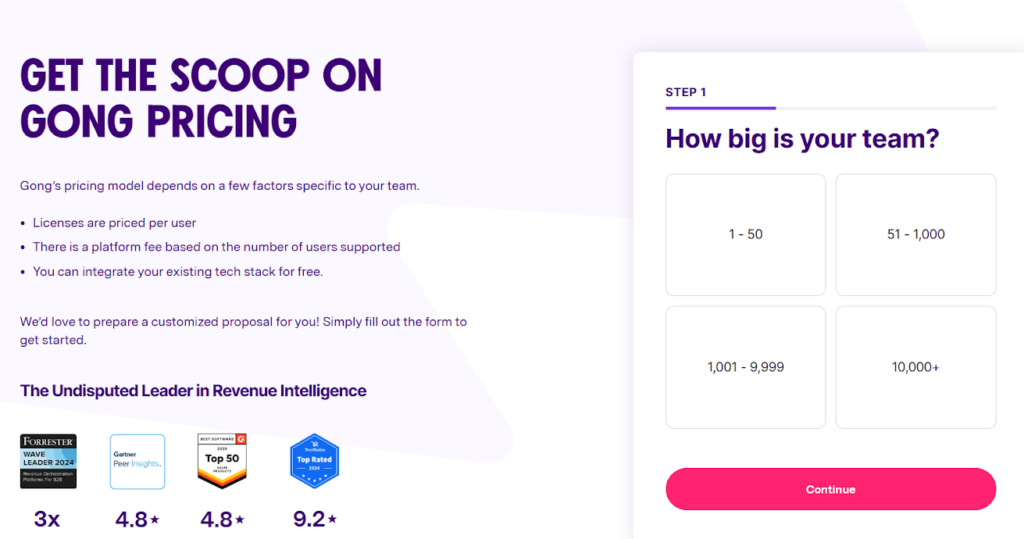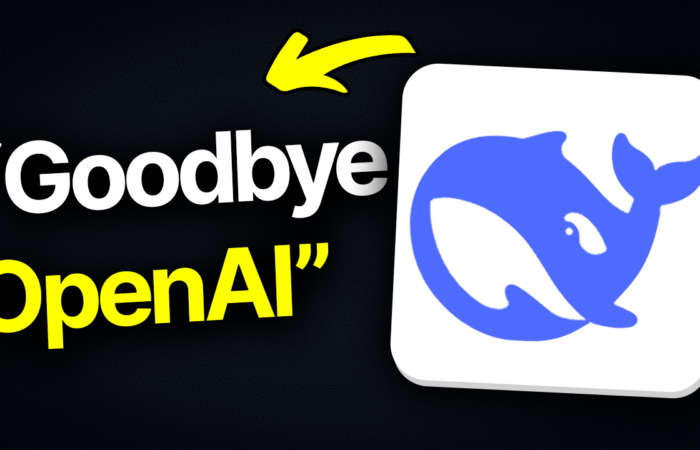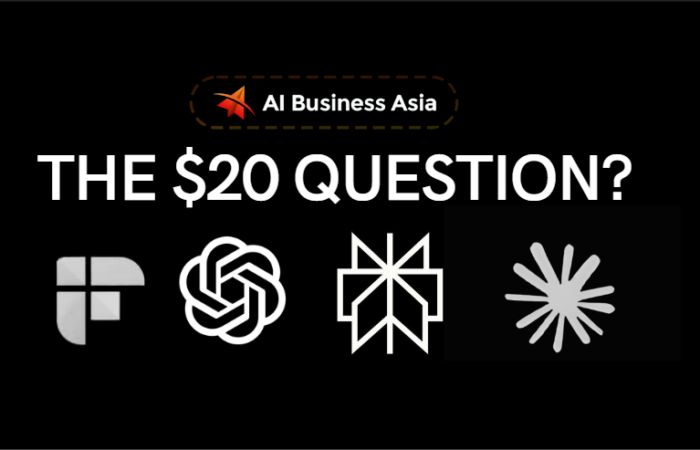
AI won’t replace salespeople.
But salespeople without AI will struggle to keep up.
The real power lies in augmentation, not automation.
Sales doesn’t have to be a constant source of stress.
Yet, for many sales teams, it still is.
- The pressure to find the right leads
- Personalize outreach
- Close deals faster can feel overwhelming.
But what if you could offload most of that heavy lifting?
AI has transformed industries, and if you thought sales were any different—you’re in for a surprise.
58% of high-performing sales teams already use AI to automate tasks and improve decision-making. (Source: Salesforce)
Businesses using AI sales tools increase lead conversions by 50% and see a 30% reduction in sales cycle time as stated by Harvard Business Review.
What does this mean for you?
- No more sifting through outdated lead lists
- No more generic, ignored cold emails
- No more guessing which deal will close
- No more wasting time on repetitive tasks
The question isn’t whether you should use AI in sales—which AI tools you should use in 2025.
Let’s break down 5 AI-powered sales tools that will give your business a competitive edge.
The Sales Game Has Changed: Why AI is No Longer Optional
Did you know that AI-powered sales tools can boost conversion rates by 30% and increase revenue per rep by 20%? (Source: McKinsey)
But…
Let’s be real—you have two choices with AI:
- Adopt it and save yourself from drowning in manual work.
- Ignore it and watch those who do adopt it leave you in the dust.
And since you’re here, we’re guessing you don’t want to get left behind.
But let’s clear something up—AI isn’t here to replace you.
It’s here to make your job easier by taking care of the tasks that don’t require your creativity or strategic thinking.
The way you buy and sell is evolving at an insane speed.
- More businesses
- More products
- More customers
- More demand.
Buyers expect personalized experiences, instant responses, and data-backed recommendations.
Keeping up with all this manually?
Nearly impossible.
So, what should an AI sales tool do for you?
- Get you the right leads so that you can convert them quicker
- Save you time by automating the repetitive, mind-numbing tasks
- Keep your workflow simple—not add more complexity.
And that’s exactly why AI is dominating B2B sales:
- Automation is the new normal:
AI tools are speeding up prospecting, follow-ups, and deal-closing.
- Personalization is non-negotiable:
Generic outreach doesn’t work, but AI ensures you speak directly to each prospect’s needs.
- Data-driven decisions win:
AI helps you predict which leads are worth your time, so you focus on deals that actually convert.
However the real challenge is not whether to switch to AI or not, it’s choosing the right AI tools for your stack.
And that’s exactly what we’ll help you with next.
The AI Sales Toolkit: 5 Tools You Can’t Ignore in 2025
With so many AI sales tools out there, how do you know which ones are actually worth your time?
The right tool should help you:
- Find better leads
- Personalize outreach
- Close deals faster—without making your workflow more complicated.
To save you the hassle, we’ve rounded up 5 must-try AI sales tools that are making a real impact in 2025.
Whether you need smarter prospecting, better email outreach, or data-driven decision-making, these tools have got you covered.
Let’s dive in.
1. Apollo.io: The All-in-One Sales Intelligence Platform
If finding the right leads feels like searching for a needle in a haystack, Apollo.io is the magnet that pulls them right to you.
It’s more than just a prospecting tool.
It’s a complete sales intelligence platform that helps you:
- Find
- Qualify
- Reach out to potential customers without switching between multiple tools.
What does Apollo ai do?
- Data Enrichment:
It helps you get verified emails, phone numbers, and company insights for millions of prospects at your fingertips.
- Outreach Automation:
You can now create and send personalized email sequences directly from Apollo.
- CRM Integration:
It beautifully syncs with Salesforce, HubSpot, and other CRMs to keep your pipeline updated.
- AI-Driven Lead Scoring:
The best part? It prioritizes the leads most likely to convert, so you focus on the right ones.
- Real-Time Prospect Updates:
Stay ahead with alerts when your leads change jobs, get promotions, or their company grows.
Why consider Apollo ai?
Apollo.io is your AI-powered assistant that:
- Finds the best leads for you
- Tells you when and how to reach out to them.
Instead of wasting time on outdated databases or guessing who to contact, Apollo gives you verified contact details and actionable insights.
Whether you’re an SDR, BDR, or part of a growth-focused team, this tool makes sure you always have the right data at your fingertips.
Apollo.io Pros and Cons:
Pros:
- All-in-One Sales Hub: Find leads, verify emails, and send outreach from one place
- AI-Powered Lead Scoring: Know exactly who’s worth your time
- Real-Time Data Updates: No more outdated contact info
Cons:
- Overwhelming at First: Tons of features = a learning curve
- Limited Free Plan: You’ll outgrow it fast if you’re serious about scaling
- Occasional Data Inaccuracy: Some contact details may need a double-check
Use case: Need a list of potential leads? Apollo gives you access to a huge database of contacts.
You can filter by:
- Industry
- Job title
- Company size, then send targeted emails or LinkedIn messages.
Perfect for sales teams looking to scale outreach.
Apollo.io Pricing Plans:
- Free Plan
- Basic ($49/month)
- Professional ($79/month)
- Organization ($119/month)
There you have it.
Apollo → A solid all-in-one tool for data sourcing and outreach, but with trade-offs.
What Users Have to Say About Apollo AI
Some users love its simplicity and ease of use, while others find its data quality average and outreach features lacking (like missing inbox rotation).
Free-tier users often complain about frustrating pop-ups and limitations.
- If you want an easy, all-in-one solution, Apollo works.
- If you need higher-quality data or more flexible outreach, alternatives like RocketReach or Mystrika might be better.
It’s a “good enough” tool—but not the best in any one area.
2. Clay: AI-Powered List Building & Hyper-Personalization:
Everyone in sales is talking about Clay—but what exactly is it, and does it live up to the hype?
Of course, we’re not talking about the colorful mud you mold into different shapes.
We’re talking about the one that molds your prospecting data into big figures (as in, revenue).
Let’s see what clay does.
Take Clay as your personal data scientist + outreach assistant in one.
Instead of manually searching for prospects and personalizing every email, Clay does the heavy lifting for you.
Here’s how Clay works:
- Find the right leads:
Clay pulls data from 50+ sources (LinkedIn, Clearbit, Google, and more) to build highly targeted prospect lists.
- AI-driven personalization:
It automatically fills in missing data—like job titles, industry insights, and even personal details like recent LinkedIn posts—to craft hyper-personalized outreach.
- Dynamic enrichment:
Need to know which prospects recently got funded? Who’s hiring for a key role?
Clay updates your list in real-time, so you always have fresh, relevant data.
- Automate your outreach:
Connect Clay to your email tools (like Apollo, Lemlist, or HubSpot) and send highly tailored messages at scale—and yes, without sounding robotic.
Why should you use Clay?
Because blasting generic emails doesn’t work anymore.
Clay saves you hours by automatically gathering rich prospect data, so you don’t have to.
- No more switching between tools
- Copy-pasting details
- Manually updating spreadsheets
Instead, you get:
- A constantly updated, high-quality lead list
- Deep personalization that feels human (but is AI-powered)
- More replies, more booked meetings, and more closed deals
Clay Pros and Cons:
Pros:
- Hyper-Personalization: Crafts ultra-specific messages that actually get replies
- Dynamic List Building: Pulls real-time data from multiple sources to keep your lists fresh
- Automates the Boring Stuff: No more manual lead research
Cons:
- Takes Time to Master: Powerful, but not super beginner-friendly
- API Limits on Lower Plans: Need higher tiers for full potential
- Can Get Pricey: Not the cheapest tool out there
Use case: Want to personalize outreach beyond just a name and company?
Clay lets you pull in data from different sources (like social media, news, and company updates) to craft hyper-personalized messages.
It’s for those who love data-driven selling.
Clay Pricing Plans:

- Free Trial
- Starter ($134/month)
- Explorer ($314/month)
- Pro ($720/month)
- Custom (Contact sales team)
Clay → A power tool for outbound prospecting, but your strategy matters more.
What Users Have to Say About Clay AI sales tool
People love Clay for its ability to enrich leads, personalize outreach, and streamline workflows.
It’s “worth every penny” if you know what you’re doing.
But Clay isn’t magic—it’s a toolbox, not an AI that does the work for you.
- Great for small GTM teams who need access to world-class tools for lead enrichment and personalization.
- Not a plug-and-play solution—you need to refine your value prop, signals, and deliverability setup.
- If you just need AI text generation, GPT for Sheets might be a simpler (and cheaper) alternative.
- Bigger companies may detect AI-written emails, so personalization is key to avoiding spam folders.
Bottom line?
Clay makes things easier, but your success depends on how well you use it.
If you’re serious about scaling outreach without losing the personal touch, Clay is the tool you need.
3. Artisan.co – The AI-Powered Outbound Automation Expert:
Artisan.co AI is basically your AI-powered sales assistant that takes the grunt work out of outbound sales.
Instead of spending hours:
- Digging for leads
- Researching prospects
- Crafting emails, Artisan.co does it all for you.
Their AI assistant, Ava, handles lead generation, research, and outreach—so you can focus on closing deals instead of chasing them.
What makes this noteworthy is how Artisan approaches automation.
Instead of just automating individual tasks, they’ve created Artisans–AI workers that can handle entire job functions end-to-end.
Ever onboarded an employee in under 10 minutes? Chances are with Artisan you can do just that, you can onboard these digital workers without any technical expertise.
How does it work?
- It finds leads for you: No more scraping the internet or buying outdated lists.
- It researches prospects: Artisan.co pulls data from multiple sources so your outreach makes sense.
- It writes personalized emails: Not just generic templates—Ava tailors messages based on the lead’s company, role, and recent activities.
- It even works with LinkedIn: Automates outreach there too, so you’re not just stuck in people’s inboxes.
Artisan.co Pros and Cons:
Pros:
- Saves a ton of time: No more manual research or writing the same email 100 times.
- Better response rates: Personalized messages mean fewer ignored emails.
- All-in-one sales tool: Lead gen, email sequences, and LinkedIn outreach in one place.
Cons:
- Expensive: Starts at $2,000/month, so not exactly a budget-friendly option.
- AI has limits: It’s great for automation, but it won’t replace real human strategy.
- You might find cheaper alternatives: Some users say similar tools exist for less.
Use Case:
- Sales teams that need high-quality leads—fast.
- Companies looking to scale outbound without hiring more reps.
- Teams that want to automate LinkedIn outreach alongside email.
Artisan.co Pricing:
There’s no fixed pricing on their website—you have to book a demo.

What are Users Saying about Artisan.co.co
Most users love how easy Artisan.co is to use.
One review put it this way:
“We’ve tested a bunch of AI sales tools, and Artisan.co stands out in terms of features, support, and ease of use.”
But not everyone is sold. One user pointed out:
“It’s a solid tool, but you have to decide if it’s worth the price. Some alternatives do similar things for less.”
Artisan.co AI is a game-changer if you want to automate your outbound sales and get better results.
But it’s not cheap, and while the AI is powerful, it’s still a tool—not a magic bullet.
If you have the budget and need a serious upgrade in your sales process, it’s worth looking into.
If you’re a smaller team or just starting, you might want to explore other options first.
4. Gong.io: AI-Driven Revenue Intelligence:
Companies using AI in 2024 reported a 29% higher sales growth than their peers.
Gong.io.
If you’ve ever wished for a crystal ball to see into your sales pipeline, Gong.io might be the next best thing.
How does Gong.io work?
With Gong.io, you can capture every interaction your sales team has—calls, emails, meetings—and then you can have an AI sift through all that data to give you actionable insights.
That’s Gong.io in a nutshell.
- Conversation Capture:
Gong.io records and transcribes your sales calls and meetings, so you never miss a detail.
- AI Analysis:
It analyzes these interactions to identify patterns, trends, and areas for improvement.
- Deal Intelligence:
Gong.io provides a clear view of your pipeline, highlighting which deals are on track and which need attention.
- Team Performance:
It offers insights into individual and team performance, helping you coach more effectively.
- Improved Forecast Accuracy:
With Gong.io’s insights, your sales forecasts become more reliable.
Why should you use Gong.io?
Because relying on gut feelings is risky business. Gong.io turns subjective guesswork into objective data.
Gong Pros and Cons:
Pros:
- AI Call Analysis: Breaks down sales calls to show what works
- Real-Time Coaching: Helps reps improve on the spot
- Data-Driven Insights: See what top closers do differently
Cons:
- Expensive for Small Teams: Best for mid-to-large businesses
- Setup Takes Time: Needs proper onboarding to be used effectively
- Might Feel Like Big Brother: Tracks conversations, which some reps might not love
Use case: If your team is making a lot of sales calls, Gong helps you analyze what’s working and what’s not.
- It records
- Transcribes
- Breaks down conversations so you can improve your pitch, handle objections better, and close more deals.
Great for sales coaching and training.
Gong.io Pricing Plans:

Gong → A powerful sales enablement tool, but pricey
What Users Have to Say About Gong.io AI sales tools
Users love Gong for:
- Coaching
- Training
- Onboarding
- Even shaping marketing strategies based on customer insights.
It excels in call transcription, keyword tracking, and competitor mentions, making it a favorite for sales teams.
That said, the biggest downside?
Price.
Many users say it’s “way overpriced” and have switched to Chorus.ai for a similar experience at half the cost.
Some also feel Gong hasn’t innovated much in recent years, while competitors have caught up.
Final take?
If budget isn’t an issue, Gong is a top-tier choice.
If it is, you might want to explore alternatives.
5. Lavender.ai – AI-Powered Email Assistant for Sales:
Ever stared at your screen, struggling to craft the perfect email?
Lavender.ai is here to change that.
Lavender is your writing best friend, guiding you in real-time, and helping you write emails that get replies—faster and with less stress.
Here’s what Lavender.ai can do for you:
- Real-Time Email Scoring:
As you type, lavender.ai analyzes your email, offering instant feedback to boost your chances of a positive response.
- Personalization Assistant:
Quickly gather insights about your recipient—like recent LinkedIn activity or company news—to tailor your message effectively.
- AI-Powered Writing Suggestions:
Stuck on phrasing?
lavender.ai suggests improvements and makes sure that your emails are clear, concise, and compelling.
- Seamless Integrations:
Whether you use Gmail, Outlook, or other platforms, lavender.ai fits right in.
It is easy to enhance your emails without switching tools.
Why Lavender.ai?
- Speed and Efficiency:
Craft personalized emails in just 3-5 minutes, a significant improvement from the typical 15+ minutes.Pulse 2.0
- Improved Response Rates:
If you follow and refine your emails as per Lavender.ai’s guidance, you’re more likely to receive positive replies which means more opportunities to scale and grow.
- Reduced Stress:
No more second-guessing your emails.
lavender.ai’s real-time guidance boosts your confidence, making email writing less daunting.
Lavender Pros and Cons:
Pros:
- AI Email Coaching: Helps you write better cold emails
- Real-Time Personalization: Adjusts tone, length, and structure instantly
- Boosts Reply Rates: More responses = more meetings booked
Cons:
- Not a Magic Bullet: You still need good targeting
- Best for Cold Emailing: Won’t help much beyond email outreach
- Can Feel Robotic at Times: You’ll need to add your touch to it
Use case: Struggling to write cold emails that don’t sound robotic?
Lavender helps you craft emails that are clear, engaging, and easy to read.
- Use it to fine-tune your templates
- Personalize outreach
- Improve response rates.
Lavender.ai’s Pricing Plans:

- Free Plan.
- Starter Plan ($27/month)
- Individual Pro Plan ($45/month)
- Team Plan ($89/seat/month)
Lavender → Solid for writing better cold emails, but not a magic bullet.
What Users Have to Say About Lavender.ai
- Great for building templates, improving readability, and making emails more engaging.
- Helps with personalizing outreach and integrates well with Salesloft, Outreach, and Gmail.
- If you’re experienced in outreach, you can fine-tune it for better results.
But…
- Don’t expect insane reply rates—10-15% is realistic, not 30%.
- Works well for cold outreach, but not game-changing—more of a “nice-to-have” than a must-have.
- The team plan is better than the solo plan, but some find it overrated.
Bottom line?
Great tool for improving emails, but your strategy still matters more than the tool itself.
How to Choose the Right AI Sales Tool: What Matters in 2025?
AI sales tools are everywhere, but how do you know which one’s actually worth it?
The last thing you want is to pay for a fancy tool that just complicates your workflow.
Let’s break it down.
- What Makes an AI Sales Tool Effective?
Not all AI tools are built the same. The best ones check these boxes:
- Data Accuracy:
If the contact details aren’t right, what’s the point?
- Seamless Integrations:
Plays well with your CRM and existing tools
- Automation That Saves Time:
Do the boring stuff so you don’t have to
- AI That Helps:
Smart recommendations, not just buzzwords
- Easy to Use:
If it takes months to figure out, it’s not worth it
- How to Stack AI Tools for a Seamless Sales Workflow
One tool won’t do it all.
The wonder happens when you combine them, for instance, you could combine them like this:
- Step 1: Apollo.io – Find and verify high-quality leads
- Step 2: Clay – Personalize outreach with dynamic data
- Step 3: Scale AI – Use predictive analytics to prioritize the best leads
This way, you’re not just collecting contacts—you’re reaching the right people, at the right time, with the right message.
- Budget vs. ROI: Where Should You Invest?
Your budget should match your sales goals.
- Solo Sales Rep or Small Team?
Start with Apollo (affordable lead data) and Lavender (email optimization).
- Growing Team?
Add Clay (personalization) and Taplio (LinkedIn growth).
- Enterprise-Level?
Go all in with Gong (call analytics)
At the end of the day, the right AI sales tool should make you money, not just cost you money.
Pick what fits your needs, automate the heavy lifting, and focus on closing more deals.
Here’s a table for recap:
| Tool | What It Does | How It Works | Use Case | Companies Using It | USP (What Makes It Stand Out) | Where It Lacks |
| Lavender AI | Helps write better cold emails | Uses AI to analyze and improve your emails in real-time | Sales reps fine-tuning outreach for better response rates | Sales teams in tech, SaaS, B2B | Real-time feedback to improve email clarity and personalization | Not a game-changer unless you’re actively testing and iterating your emails |
| Gong | Analyzes sales calls and meetings | Records, transcribes, and provides insights into conversations | Sales leaders track what works in calls to train their teams | LinkedIn, Paycor, Monday.com | Deep call analytics to improve sales performance | Works best for teams doing lots of calls—less useful for email-heavy sales |
| Apollo | Finds and reaches out to leads | Huge database + automation for email and LinkedIn outreach | SDRs and BDRs building targeted prospect lists | Deel, Rippling, smaller sales teams | Large contact database with advanced filters | Data accuracy can be hit-or-miss, so manual verification is needed |
| Clay | Personalizes outreach beyond basic info | Pulls data from different sources to create hyper-personalized messages | Outbound sales teams crafting highly relevant cold emails | Startups, outbound-heavy B2B companies | Customizable automation—lets you integrate different data sources | Steep learning curve; requires setup and data management |
| Artisan | AI-powered LinkedIn content and engagement | Helps craft, schedule, and optimize LinkedIn posts | Founders, sales teams, and content creators building LinkedIn presence | B2B creators, LinkedIn-focused businesses | More control over content, AI-assisted writing, and audience insights | May require human tweaks to avoid sounding too AI-generated |
Takeaway?
These tools are great assistants, but none replace human effort.
The best results come when you use them strategically, not blindly.
What does the Internet have to say about them?
→ Apollo:
Great for prospecting and outreach with a vast database.
However, the data quality isn’t always perfect, so it’s best used with a manual verification process.
Works well when paired with a solid outreach strategy.
→ Clay:
Extremely powerful for personalized, data-driven outreach.
It integrates with multiple tools, but it comes with a steep learning curve.
Best suited for those who love experimenting with data and automation.
→ Artisan:
Some people are really excited about Artisan AI, calling it a game-changer for outbound sales.
Others?
They are a bit skeptical.
The biggest concern is whether Ava, the AI assistant, actually writes emails that sound human—or if it’s just another ChatGPT-style copy-paste job.
On the flip side, those who’ve tried it say Ava’s emails are miles ahead of generic AI-generated messages.
Plus, the team is constantly improving the quality.
Overall, it’s a tool with a lot of potential, but as with any AI-driven sales tool, the key is using it wisely—because no one wants an inbox flooded with robotic cold emails.
→ Gong:
Fantastic for:
- Analyzing sales calls
- Coaching teams
- Improving conversations.
If your sales process heavily relies on calls, it’s a game-changer. If not, it might be overkill.
→ Lavender AI:
A solid tool for writing better cold emails.
It helps with:
- Structure
- Readability
- Personalization, but don’t expect it to skyrocket response rates.
Most users see around 10-15%, not the 20-30% some might hope for.
Great for templates, but once you learn the basics, you might not need it long-term.
Moral of the story?
These tools are enhancers, not replacements for a smart sales strategy.
The best results come when you combine automation with personal effort and strategic thinking.
Final Thoughts: AI Won’t Replace Salespeople—But It Will Replace Those Who Don’t Use It
Let’s be real—AI isn’t here to take your job.
But it will give an unfair advantage to those who use it.
The best sales teams aren’t choosing between AI and human intelligence—they’re combining both.
- AI crunches the numbers, automates the repetitive work, and gives you insights.
- You bring the strategy, creativity, and human connection that closes deals.
The result?
Faster deal cycles, smarter outreach, and more time spent on what actually matters—selling.
So, where do you start?
Start small. Pick one tool, test it, and see what works for your sales process.
Then, scale from there.
Now, over to you—what’s your go-to AI sales tool? Or still unsure which one to pick?
Drop a comment, and let’s talk.
Subscribe To Get Update Latest Blog Post









Leave Your Comment: